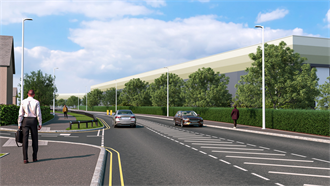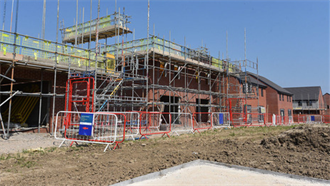The acquisition out of receivership of Battersea Power Station in London by a Malaysian consortium in 2012 was voted the best development deal in PropertyEU's Deal of the Decade Awards as it kickstarted the regeneration of the Nine Elms area.
In 2012 a Malaysian consortium of property developer SP Setia, conglomerate Sime Darby and the Employees’ Pension Fund of Malaysia (EPF) acquired Battersea Power Station in London from administrators Ernst & Young for £400 mln. JLL, Knight Frank, Linklaters and Norton Rose acted as advisers to the buyer.
The sale of the iconic building and the 16-hectare site, described at the time as the last undeveloped riverside site in central London, kickstarted the regeneration of the Nine Elms area. The new owners plan to develop 3,500 homes, 160,000 m2 of office space, retail units and a park at the site.
The search for a buyer began in February 2012 after creditors Lloyds Bank and Ireland’s asset agency NAMA took control of the asset and appointed administrators. A year after the deal was sealed, a consortium of Asian banks provided a £790 mln syndicated loan for the massive mixed-use development project. The facility is in two parts: £532 mln for the first phase of the project and £258 mln to refinance the acquisition loan.
The redevelopment is proving a success, with the first two phases breaking records for the number of apartments sold and prices achieved. Phase 1 saw the most successful sales event ever in London, with over 850 apartments sold in just four weeks for £750 mln, while Phase 2 generated £600 mln of sales in four days.
1ST RUNNER-UP
In 2015 an international investor consortium, led by AXA and Lipton Rogers, acquired The Pinnacle development site at 22 Bishopsgate in the City of London from Sedco, Wafra and Arab Investments for £770 mln.
JLL, CBRE London Investment Properties, City Agency and Building Consultancy advised the buyer, while CBRE acted for the seller. The jury said the sale was achieved after a ‘comprehensive review’ of the existing scheme to change the design, lower the costs and make it deliverable.
2ND RUNNER-UP
AXA IMRA’s ground-up redevelopment of an industrial area in Bois-Colombes, a suburb of Paris, has resulted in a dynamic mixed-use quarter offering large companies a viable alternative to the traditional business district of La Défense.
The construction of more than 500 flats, a central square hosting over 20 shops, a 2.5 hectare public park, and more pedestrian and cyclist-friendly local paths, have all come together to create an urban environment that is now a destination for both living and working.
The offices were 100% pre-let before delivery while 100% of the flats were sold off-plan. ‘The presence of blue-chip companies, local amenities and residential have all contributed to create a vibrant and desirable neighbourhood,’ said AXA in submitting the development. It notes that only the second and third phase of Bois-Colombes was submitted for PropertyEU’s competition, and that they form part of an even more ambitious project.
The first redevelopment phase of the former industrial zone ended in 2005 and included a further 50,000 m2 of offices and over 200 flats, while the fourth phase aims to develop an additional 43,000 m2 of offices starting in 2017.
All in all, once complete, AXA IMRA will have created a second town centre for Bois-Colombes, with more than 248,000 m2 of offices, 700 flats, a 100-room hotel, a nursery, a community centre, and, in a nod to the site's industrial past, a primary school rebuilt inside of a wind tunnel.


































